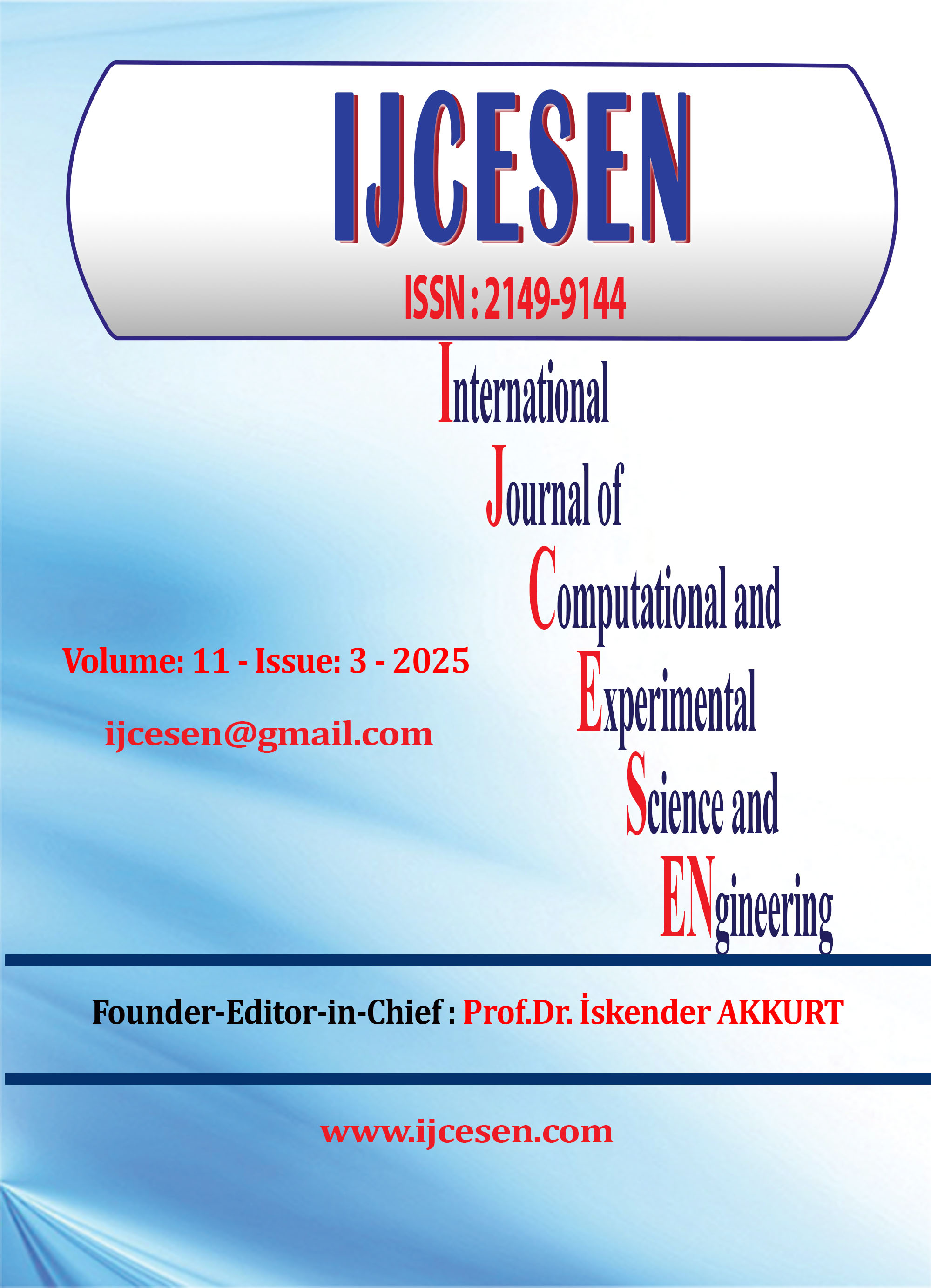Optimizing Distance Education with Emotionally Intelligent Decision Support Systems
DOI:
https://doi.org/10.22399/ijcesen.2658Keywords:
Emotional Artificial Intelligence, Emotions, Distance Education , Personality Types , Emotional ConditionAbstract
This article discusses the rapid development of emotional artificial intelligence and its significance in distance education. It highlights the necessity of considering students emotions to enhance educational quality. The analysis shows that emotions are reactions to stimuli and help the body adapt, with facial expressions being a universal method to express emotions. These expressions can be encoded using a facial movement coding system, simplifying the process of reading emotions. Additionally, the article also examines the influence of personality types on emotions and presents existing classifications of personality types.
A functional model has been developed to organizing personalized distance education, integrating a decision support system within the LMS that considers students’ emotional states. furthermore, a mathematical model for managing the distance education process has been created, taking into account students’ emotional information, focusing on five primary emotions and four personality types.
The article details the development of an algorithm for providing emotional support to influence students’ emotional states, which has been implemented in the decision support system for distance education. Enhancing distance education presents significant opportunities, such as a personalized learning, reduced stress, increased motivation, and efficiency all contributing to a higher quality of education.
References
[1] Alsemawi, M. R. M. (2023). Emotions recognition from human facial images based on fast learning network. Indonesian Journal of Electrical Engineering and Computer Science. 30(3);1478-1487. https://doi.org/10.11591/ijeecs.v30.i3.pp1478-1487
[2] Jadon, A. K. (2024). Enhancing emotion detection with synergistic combination of word embeddings and convolutional neural networks. Indonesian Journal of Electrical Engineering and Computer Science. 35(3);1933-1941. https://doi.org/10.11591/ijeecs.v35.i3.pp1933-1941
[3] Jadon, A. K. (2023). An investigation of machine learning techniques in speech emotion recognition. Indonesian Journal of Electrical Engineering and Computer Science. 29(2);875-882. https://doi.org/10.11591/ijeecs.v29.i2.pp875-882
[4] Gupta, S. (2018). Facial emotion recognition in real-time and static images. In 2018 2nd International Conference on Inventive Systems and Control (ICISC) (pp. 553-560). https://doi.org/10.1109/ICISC.2018.8398861
[5] Ko, B. (2018). A brief review of facial emotion recognition based on visual information. Sensors. 18(2);401. https://doi.org/10.3390/s18020401
[6] Zhou, C., Wang, L., Zhang, Q., & Wei, X. (2014). Face recognition based on PCA and logistic regression analysis. Optik. 125(20);5916-5919. https://doi.org/10.1016/j.ijleo.2014.07.080
[7] Pandey, R. K., Karmakar, S., Ramakrishnan, A. G., & Saha, N. (2019). Improving facial emotion recognition systems using gradient and laplacian images. arXiv preprint arXiv:1902.05411. Retrieved from http://arxiv.org/abs/1902.05411
[8] Lieskovská, E., Jakubec, M., Jarina, R., & Chmulík, M. (2021). A review on speech emotion recognition using deep learning and attention mechanism. Electronics. 10(10);1163. https://doi.org/10.3390/electronics10101163
[9] Boudreaux, M., & Ozer, D. (2015). Five Factor Model of Personality, Assessment of. In International Encyclopedia of the Social & Behavioral Sciences (Second Edition) (pp. 230-235). Elsevier.
[10] Alhuzali, H., & Ananiadou, S. (2021). SpanEmo: casting multi-label emotion classification as span-prediction. In Proceedings of the 16th Conference of the European Chapter of the Association for Computational Linguistics: Main Volume (pp. 1573-1584). https://doi.org/10.18653/v1/2021.eacl-main.135
[11] Jaakkola, H., Thalheim, B., & Henno, J. (2022). About the essence of intelligence-will artificial intelligence (Ever) cover human intelligence?
[12] Cichocki, A., & Kuleshov, A. P. (2021). Future Trends for Human-AI Collaboration: A Comprehensive Taxonomy of AI/AGI Using Multiple Intelligences and Learning Styles. Computational Intelligence and Neuroscience. 2021(4);21. https://doi.org/10.1155/2021/8893795
[13] Colman, A. M. (2015). A Dictionary of Psychology. Oxford University Press. https://doi.org/10.1093/acref/9780199657681.001.0001
[14] Joshi, A., & Kaur, R. (2013). A study of speech emotion recognition methods. International Journal of Computer Science and Mobile Computing. 2(4);28-31. https://www.ijcsmc.com/docs/papers/April2013/V2I4201323.pdf
[15] Polignano, M., Basile, P., de Gemmis, M., & Semeraro, G. (2019). A comparison of word-embeddings in emotion detection from text using BiLSTM, CNN and self-attention. In Adjunct Publication of the 27th Conference on User Modeling, Adaptation and Personalization (pp. 63-68). https://doi.org/10.1145/3314183.3324983
[16] Cui, Z., & Li, Y. (2021). The Relationship Between Proactive Behavior and Work-Family Conflict: A Moderated Mediation Model. Frontiers in Psychology. 12;15. https://doi.org/10.3389/fpsyg.2021.657863
[17] Acheampong, F. A., Nunoo-Mensah, H., & Chen, W. (2021). Recognizing emotions from texts using an ensemble of transformer-based language models. In 2021 18th International Computer Conference on Wavelet Active Media Technology and Information Processing (ICCWAMTIP) (pp. 161-164). https://doi.org/10.1109/ICCWAMTIP53232.2021.9674102
[18] Setiawan, E. I., Kristianto, L., Hermawan, A. T., Santoso, J., Fujisawa, K., & Purnomo, M. H. (2021). Social Media emotion analysis in indonesian using fine-tuning BERT model. In 2021 3rd East Indonesia Conference on Computer and Information Technology (EIConCIT) (pp. 334-337). https://doi.org/10.1109/EIConCIT50028.2021.9431885
[19] Ekman, P., & Friesen, W. (1978). Facial Action Coding System. https://doi.org/10.1037/t27734-000
[20] Frank, M. (2001). Facial Expressions. In International Encyclopedia of the Social & Behavioral Sciences (pp. 5230-5234). Elsevier.
[21] Kerber, A., Roth, M., & Herzberg, P. Y. (2021). Personality types revisited–a literature informed and data-driven approach to an. PLOS ONE. 1;27. https://doi.org/10.1371/journal.pone.0244849
[22] Rainer, R. (2007). What is a definition of emotion? And are emotions mental-behavioral processes? Social Science Information. 46(3). https://doi.org/10.1177/05390184070460030110
[23] Tânia, B., Rute, B., João, H., & Odete, N. (2022). Attachment orientations, emotion goals, and emotion regulation. Personality and Individual Differences. 7. https://doi.org/10.1016/j.paid.2022.112059
[24] Winters-Miner, L. A., & Gary, M. P. (2015). History of Predictive Analytics in Medicine and Health Care. In Hippocrates and Classical Greece (pp. 5-22). Academic Press.
[25] Dreisbach, G. (2022). Using the theory of constructed emotion to inform the study of cognition-emotion interactions. Psychonomic Bulletin & Review. https://doi.org/10.3758/s13423-022-02176-z
Downloads
Published
How to Cite
Issue
Section
License
Copyright (c) 2025 International Journal of Computational and Experimental Science and Engineering

This work is licensed under a Creative Commons Attribution 4.0 International License.





